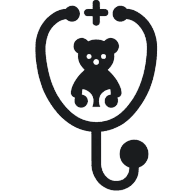3 Steps to Transition Your Child Back to Routine After Illness
Transitioning a child back to their routine after an illness can be a challenging process for both parents and children. This article provides expert-backed strategies to help ease your child back into their normal schedule effectively. Discover practical steps to gradually reintroduce structure, create a calm environment, and plan a smooth recovery transition day for your child.
- Gradually Reintroduce Structure After Illness
- Create Calm, Predictable Return to Routines
- Schedule Transitional Day for Smooth Recovery
Gradually Reintroduce Structure After Illness
Children often resist returning to their normal routine after illness, but gently reintroducing structure in phases works best. I advise parents to start by resetting sleep and meal timings even before the child resumes school or daycare. For example, with toddlers recovering from a viral infection, I recommend re-establishing their nap and bedtime rhythm two days in advance, which noticeably reduces morning fatigue and irritability.
I also suggest gradually increasing physical and social activity instead of jumping back into a full schedule. One of my patients, a 4-year-old who had been bedridden for a week with pneumonia, struggled with energy levels. We incorporated light indoor play before restarting preschool, and within three days, he adjusted without setbacks.
Above all, children sense stress, so parents should stay calm, validate their child's feelings, and celebrate small wins, like finishing lunch or attending a full class, to build confidence and restore routine resilience.

Create Calm, Predictable Return to Routines
When a child recovers from an illness, the goal is not to bounce back quickly, but to return with stability. I begin by reinstating small habits such as waking up at the same hour, eating regularly, and napping in the afternoon. There's no urgency to do all of it together. It's just a gradual return to routines.
The first few days should feel calm and predictable. Keep activities light. Bring back daily habits that feel normal. Observe how your child responds. Some bounce back quickly, while others take longer. That's not a problem. The signs you need are in how they move, how they eat, and how they rest. If those fall into place, the rest follows.
Structure gives children a sense of control. You don't need to fill their schedule. You need to create space for them to feel ready. Recovery doesn't end when the symptoms stop. It ends when your child feels secure in their routine again.
Stay consistent. Keep the tone calm. Give your child time. That's how you build a smooth return.

Schedule Transitional Day for Smooth Recovery
Here's a strategy that might sound counterintuitive at first but works wonders:
I ease my child back into routine by intentionally creating a "halfway day."
Instead of jumping from a sick day to a full-on schedule, we deliberately schedule one transitional day where they're healthy enough to be active, but expectations are dialed way down. Maybe they return to school for just half the day, or they skip extracurricular activities and just focus on getting comfortable again.
At home, we keep routines like meals and bedtime consistent, but with more flexibility and comfort built in—extra breaks, downtime, and emotional check-ins.
This approach changed everything. Kids often get overwhelmed jumping from illness to full-speed routine. The halfway day buffers the shock and prevents relapses (both physical and emotional).
The hidden benefit? They learn it's okay—and even smart—to ease back into things gradually. Life skill bonus unlocked!


